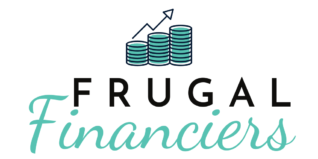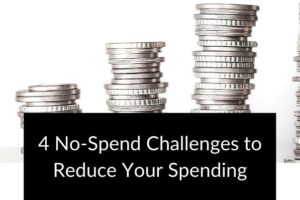There are many personal finance hacks that you can implement in your life to improve your situation.
At the end of the day, you want tips that will either make you money or save you money.
There are a ton of posts out there about hacks that are secretly just affiliate ads in hiding.
Our goal is to provide you with some simple personal finance tips that you may be unaware of to help you improve your finances.
Alas, here are some personal finance hacks to put or keep some extra cash in your pocket.
Take Advantage of Your Bank Deposits or Buy Treasury Bills
Do you have cash sitting in your checking and savings accounts?
How much are you earning on those deposits?
The biggest banks offer around 0% on checking accounts and 0.05% on savings, leaving you with around $0.50 each year on $1,000 deposit in your savings account.
Meanwhile, other banks are offering significantly higher rates on savings accounts and some banks even offering interest-bearing checking accounts to customers.
A 2.00% interest rate on a savings account would result in $20 each year on a $1,000 deposit.
Not a huge amount, but its a way to make some money off of your money.
Take advantage of these banks by opening an account and putting your money with that bank.
Bankrate is a great website to compare banks and their respective bank account features.
You can also purchase treasury bills from the US government through Treasury Direct.
This is a little more complicated but the interest rates are typically higher than bank offered CD and savings account rates.
Refinance Loans
If you have loans, that means that you’re paying for interest each time you make a payment.
You may be able to lower your interest charge by refinancing your loans at a lower interest rate.
Refinancing is the process of taking out a new loan with new terms (interest rate aka APR, length of repayment period, etc.) which pays off and essentially replaces your old loan.
Many homeowners refinance their mortgages to save some money through a few different ways including refinancing:
- at a lower interest rate – reduces the cost of interest
- with a shorter term length (moving from 30 years to 15 years) – reduces the cost of interest by paying off balance faster
- at a loan to value of the home (loan amount divided by the value of the home) of 80% – removes mortgage insurance expense
You can also refinance student loans which is typically done to reduce the interest rate on the loan.
You also may be able to take out a personal loan to pay off credit card debt.
The idea is that a personal loan will have a lower interest rate than your credit card.
If you are able to refinance a loan or loans, you should do some research.
It is a great way to reduce your expenses and help you pay off your debt faster.
For example, if you’re paying $500 each month on debt but $100 of that is going to interest the balance is decreasing by $400.
But, if you were able to refinance and your interest charge drops to $50, you would now be putting $450 towards the balance each month.
If you’re looking for more details on paying off debt check out our posts:
What Debt Should You Pay Off or Pay Down First?
How to Get Out of Debt | 5 Steps to be Debt Free
Set Financial Goals
Wait a minute, this ain’t no hack!
We are guessing that’s what you’re thinking but hear us out for a second.
Remember, our goal isn’t to mislead you or provide you with information that isn’t actually going to help you.
And, we’ve seen a lot of that from other so-called “personal finance” blogs and websites.
So, how is setting financial goals a hack?
It’s all about mindset.
By setting financial goals, you’ve put a target in your mind to help you make decisions.
Without a goal, there’s nothing to stop you from buying that triple shot caramel latte with almond milk and your name misspelled.
With a goal, you’ve now created a decision process.
Will buying this sweet coffee concoction prevent you from saving for that beach trip this summer?
It doesn’t necessarily matter if the answer is yes or no, its that sometimes it will be yes and sometimes it will be no.
Without financial goals, you have nothing to guide your financial decisions.
For more on setting financial goals, check out our post:
How Successful People Set Financial Goals
Build A Budget
We know … you’re probably saying, this isn’t a hack either.
But it is! If the goal is to improve your finances through easy hacks then a budget totally is a personal finance hack.
Why?
Because, when you build a budget you are laying the ground-work for changing your behavior.
Why do you build a budget?
So you can set spending limits, reduce your spending in some areas, and use the saved money to increase your net worth by investing, paying down debt or both!
By setting these spending limits you’ve created another defined target in your brain.
Let’s use the example from above:
Without a budget you have two options for deciding to buy or not buy a triple shot caramel latte with almond milk and your name misspelled:
- Hope that you’ll have the money to do it
- Try to do some finance math on the fly in your brain for something that costs around $5-7 — probably not a great use of time for a small purchase
With a budget, you have a third option:
Ask yourself if you have any remaining dollars for this expense.
If you do, buy, if you don’t, don’t buy.
It may require a little math, but probably not.
What it really requires is you to be aware of your spending.
If your monthly budget for lattes each month is $25 then you can simply divide that amount by the cost of the latte.
At $5 that’s five lattes every month. That shouldn’t be too difficult to remember.
Creating a budget is a hack because it will lead you to
Hopefully, it will change your spending habits to the stay within the limits you’ve set.
Our bad spending habits are not because we’re less intelligent or anything like that.
It’s just that we are not aware.
Take Advantage of Tax Favorable Investing Accounts
401(k). Traditional IRA. Roth IRA. HSA.
All of these accounts have potential tax benefits associated with them.
You can use these accounts to lower your tax bill now or in the future.
If you’re investing your saved money, it may be worthwhile to do some research into these different types of vehicles.
The 401(k) plan is an employer offered account, meaning that you have to get it at your employer.
Typically, you can have money put into the account through withdrawals from your paycheck.
The great thing about it is that any money taken out is pretax meaning you will not have to pay any taxes on that money while it stays in the account.
This is an incentive for people to save for retirement. The money within the account cannot be used without a penalty or under abnormal circumstances until age 59.5.
Yes, 59 … and a half. Here’s to celebrating half-birthdays.
The traditional IRA (Individual Retirement Account) has the same tax advantage of the 401(k), reducing tax income until the money is withdrawn from the account.
The Roth IRA is kind of the opposite of the traditional IRA in that you pay taxes now on the money put into the account but you don’t pay any taxes later.
Another key difference, you can pull out any contributions (the money you put it) at any time but any value appreciation cannot be withdrawn until 59.5.
For example, you put $1,000 into a Roth IRA and buy and S&P 500 index which appreciates to $1,050 and pays you $20 of dividends over the next year putting the total account value at $1,070. You could pull out $1,000 (your original contribution) at any time but would face a penalty for the $70 if pulled out before 59.5.
Another common account that has become popular in recent years is the Health Savings Account or HSA.
It is similar to the 401(k) and traditional IRA accounts in that contributions are done on a pre-tax basis, effectively reducing your taxable income.
But, instead of saving for retirement, the money is designated for health-related expenses (not insurance though) like visits to the doctor.
Even better, withdrawals for qualified medical expenses are tax-free so you pay no taxes at all.
Additionally, if you do not use all of the money, once you reach 65 you can withdraw money as taxable income similar to the 401(k) or traditional IRA.
For more on these savings vehicles, check out this information from the IRS:
What about all those money making and saving apps, websites, and other stuff?
Yeah, we don’t really think those are personal finance hacks.
We’ve seen a lot of them out there on other websites about the app that will make you money filling out surveys or a plugin that will save you some money.
They’re closer to hacks to make money or save money in the short-term.
And, while making money and saving money are part of your personal finances. A lot of those “hacks” do not have long-term benefits.
A hack to make an extra $5 survey likely undervalues your time and your capabilities.
A hack to save money by adding a plugin that saves you money every time you shop still results in you spending money.
Simply put, you have to be cautious of some of the personal finance hacks out there that are nothing more than a thinly veiled attempt to get you to use a product or take advantage of your time.





Leave a Reply
Your email is safe with us.
You must be logged in to post a comment.